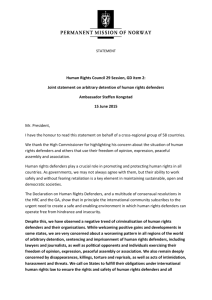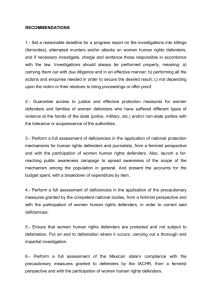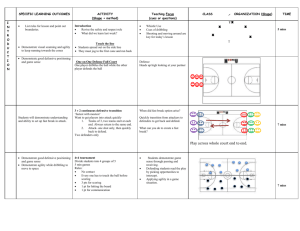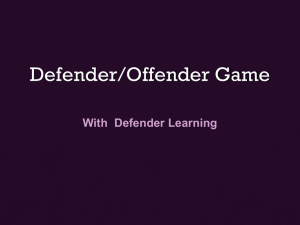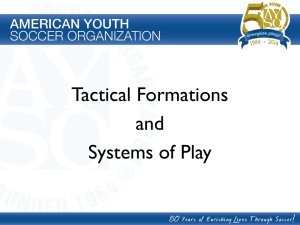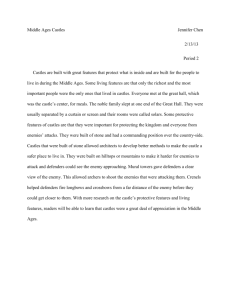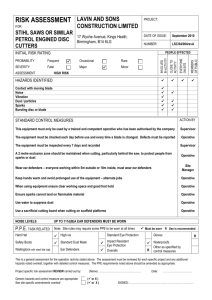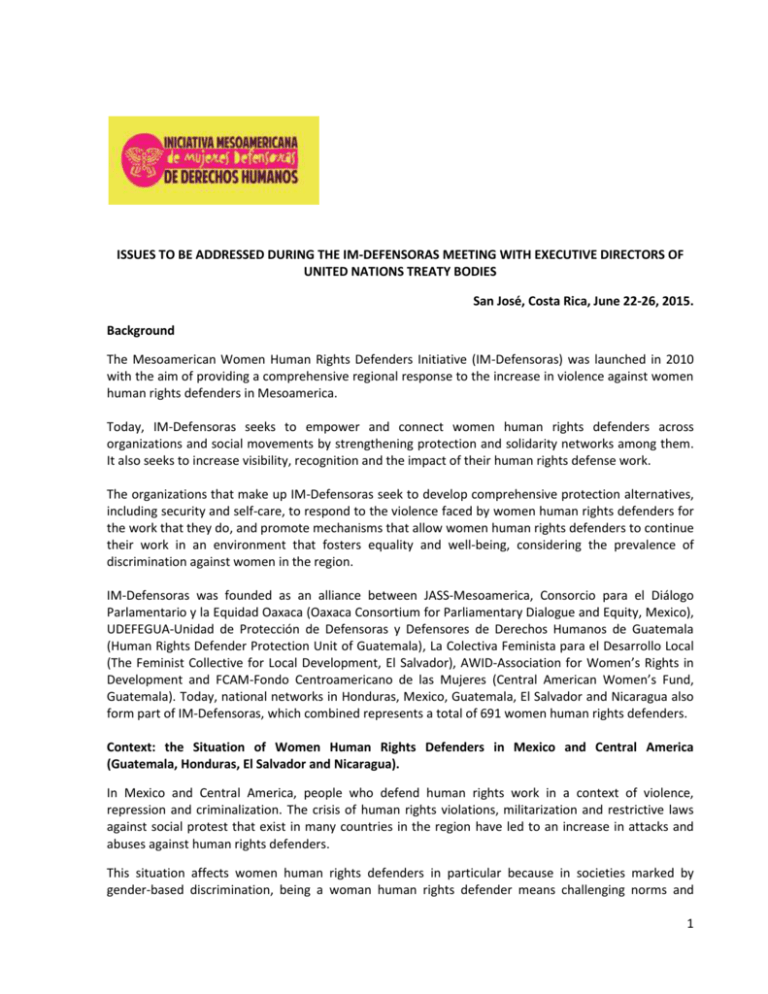
ISSUES TO BE ADDRESSED DURING THE IM-DEFENSORAS MEETING WITH EXECUTIVE DIRECTORS OF
UNITED NATIONS TREATY BODIES
San José, Costa Rica, June 22-26, 2015.
Background
The Mesoamerican Women Human Rights Defenders Initiative (IM-Defensoras) was launched in 2010
with the aim of providing a comprehensive regional response to the increase in violence against women
human rights defenders in Mesoamerica.
Today, IM-Defensoras seeks to empower and connect women human rights defenders across
organizations and social movements by strengthening protection and solidarity networks among them.
It also seeks to increase visibility, recognition and the impact of their human rights defense work.
The organizations that make up IM-Defensoras seek to develop comprehensive protection alternatives,
including security and self-care, to respond to the violence faced by women human rights defenders for
the work that they do, and promote mechanisms that allow women human rights defenders to continue
their work in an environment that fosters equality and well-being, considering the prevalence of
discrimination against women in the region.
IM-Defensoras was founded as an alliance between JASS-Mesoamerica, Consorcio para el Diálogo
Parlamentario y la Equidad Oaxaca (Oaxaca Consortium for Parliamentary Dialogue and Equity, Mexico),
UDEFEGUA-Unidad de Protección de Defensoras y Defensores de Derechos Humanos de Guatemala
(Human Rights Defender Protection Unit of Guatemala), La Colectiva Feminista para el Desarrollo Local
(The Feminist Collective for Local Development, El Salvador), AWID-Association for Women’s Rights in
Development and FCAM-Fondo Centroamericano de las Mujeres (Central American Women’s Fund,
Guatemala). Today, national networks in Honduras, Mexico, Guatemala, El Salvador and Nicaragua also
form part of IM-Defensoras, which combined represents a total of 691 women human rights defenders.
Context: the Situation of Women Human Rights Defenders in Mexico and Central America
(Guatemala, Honduras, El Salvador and Nicaragua).
In Mexico and Central America, people who defend human rights work in a context of violence,
repression and criminalization. The crisis of human rights violations, militarization and restrictive laws
against social protest that exist in many countries in the region have led to an increase in attacks and
abuses against human rights defenders.
This situation affects women human rights defenders in particular because in societies marked by
gender-based discrimination, being a woman human rights defender means challenging norms and
1
cultural stereotypes that limit and question the political and social participation of women. It also means
working to defend and promote human rights within a context of inequality, one that is defined by
limited social recognition of women human rights defenders’ work or the burden of domestic and care
work that they are required to assume. It also includes elevated incidences of violence against women
that obstruct, inhibit or make their participation in public life and the defense and promotion of their
rights difficult.
Through its own registry system, IM-Defensoras documented a total of 414 attacks against women
human rights defenders across Mexico, Honduras, El Salvador and Guatemala in 2012. Based on the 12
main types of attacks against women human rights defenders in 2012, we found that the four most
common were: psychological intimidation and harassment; threats, warnings and ultimatums; excessive
use of force; and criminalization and prosecution.
40% of the registered attacks included a gender component, that is to say, included at least one
expression of gender-based violence (touching parts considered sexual, threats or acts of sexual
violence, gender stereotyping in warnings and ultimatums, gender stereotyping in access to justice,
etc.).
Land and territory defenders working in rural contexts and part of indigenous communities experienced
the most attacks in 2012. Women human rights defenders working for a woman’s right to live free of
violence followed, with special regard to feminicide/femicide. Other commonly attacked women human
rights defenders include those defending a woman’s right to political participation and sexual and
reproductive rights, including the right to sexual diversity.
In 2012, in aggregate terms, government actors represented the main agents responsible for attacks
against
women
human
rights
defenders,
mainly,
municipal
authorities
(26.8%),
state/departmental/provincial authorities (23.7%), police (14.5%), military (14.3%) and national
authorities (7%)1.
We also identified attacks committed by actors within the women human rights defenders’ circles. We
are referring primarily to people in their communities, relatives and people within their own
organization, representing 13% of total perpetrators.
In our experience, a women human rights defender that is attacked within her own circle, who lives
through domestic violence, who is not recognized in her community for her work, and ostracized for
having strayed from her traditional role as a woman, whose leadership is not recognized within her
organization or who experiences workplace harassment, will face many more challenges when attacked
because of her work promoting and defending human rights.
In spite of their rights-based work, women human rights defenders equally face different forms of
gender-based discrimination, among them, the gendered division of labour that limits their participation
and work as women human rights defenders. In the IM-Defensoras study El autocuidado de las
defensoras de derechos humanos en Mesoamérica 2 (Women Human Rights Defender Self-Care in
Mesoamerica), we found that 58% of women human rights defenders dedicate between 4-6 hours a day
to domestic work, on top of their work as women human rights defenders.
1
Ídem p. 40.
Travesías para pensar y Actuar, Experiencias de Autocuidado de Defensoras de Derechos Humanos en Mesoamérica. 2014
Available at http://consorciooaxaca.org.mx/defensoras-de-derechos-humanos (only in Spanish)
2
2
We also found a gap in minimum working conditions for women human rights defenders; 50% require
other employment to subsist, 55% have no health benefits and 81% have a health issue that requires
ongoing care. The amount of pressure women human rights defender’s face in their work also leads to
exhaustion and stress, which, according to our study, is experienced by 88% of women human rights
defenders.
Recommendations:
The following recommendations are provided for consideration by the respective treaty bodies. The
recommendations are aimed at encouraging governments in the region to:
Include disaggregated data to make the situation of women in particular contexts visible and to
highlight the situation of women human rights defenders;
Include recommendations that clearly recognize the need to guarantee the security of women
human rights defenders as individuals and a collective group; that establish the limits of
government authority; that promote effective sanctions on public officials having committed
violations and that avoid all persecution, criminalization and prosecution of women human
rights defenders;
Make government obligations such as the protection of women human rights defenders public
and make concrete the legal implications of the resolution on the “Protection of Women Human
Rights Defenders” adopted in December 2013 by the United Nations General Assembly;
Recognize the role of women human rights defenders as positive and protective that supports
the creation of a social environment that respects the work of women human rights defenders,
combats discrimination and inhibits possible attacks. Some specific measures to realize this
recognition are:
o that all government actors abstain from making any statement that questions or
discredits the work of women human rights defenders, as well as any statement that
promotes the stigmatization, defamation, discrimination and machismo against a
women human rights defender;
o public recognition of the importance and legitimacy of women’s contribution to the
defense and promotion of human rights and the creation of spaces for dialogue and
direct communication with women human rights defenders and their organizations.
Put in place where none exist and strengthen where they do, legal and institutional mechanisms
for the comprehensive protection of women human rights defenders from an intersectional
gender-based perspective in both the formulation of the law and its implementation
mechanisms. The active participation of women human rights defenders and feminist
organizations in the formulation, implementation and evaluation of these legal/institutional
frameworks is essential.
As part of these institutional protection mechanisms, ensure the design of comprehensive
protection protocols specifically for women human rights defenders that include comprehensive
reparation methods that, among others, combat the stigmatization of women human rights
defenders, ensure access to justice and combat impunity;
Recognize and apply the international framework against sexual torture to avoid this grave
human rights violation that inhibits their work and places women human rights defenders’ lives
and integrity at risk.
Publications
3
2012 Assessment Report: Violence against Women Human Rights Defenders in Mesoamerica, Ed. IM-Defensoras,
Mexico FD, Available at http://www.scribd.com/doc/187280100/2012-ASSESSMENT-REPORT-Violence-AgainstWomen-Human-Rights-Defenders-in-Mesoamerica-Summary-Findings
2014. Paving the Road for Freedom and Equality, Ed. IM-Defensoras, Mexico FD, Available at
http://www.scribd.com/doc/204214879/Paving-the-Road-for-Freedom-Equality
2014. IM-Defensoras Granted Moffitt Award in Washington, DC. Available at
http://www.scribd.com/doc/259045999/IM-DEFENSORAS-GRANTED-LETELIER-MOFFITT-AWARD-INWASHINGTON-DC-Boletin-IMD-Washington-DC-English
Paving
the
Road
for
Freedom
https://www.youtube.com/watch?v=SVDpFZVvec8
and
Equality
Video.
Available
at
Contact information: Axela Romero (Secretariat): axelaromeroimdefensoras@gmail.com
4

